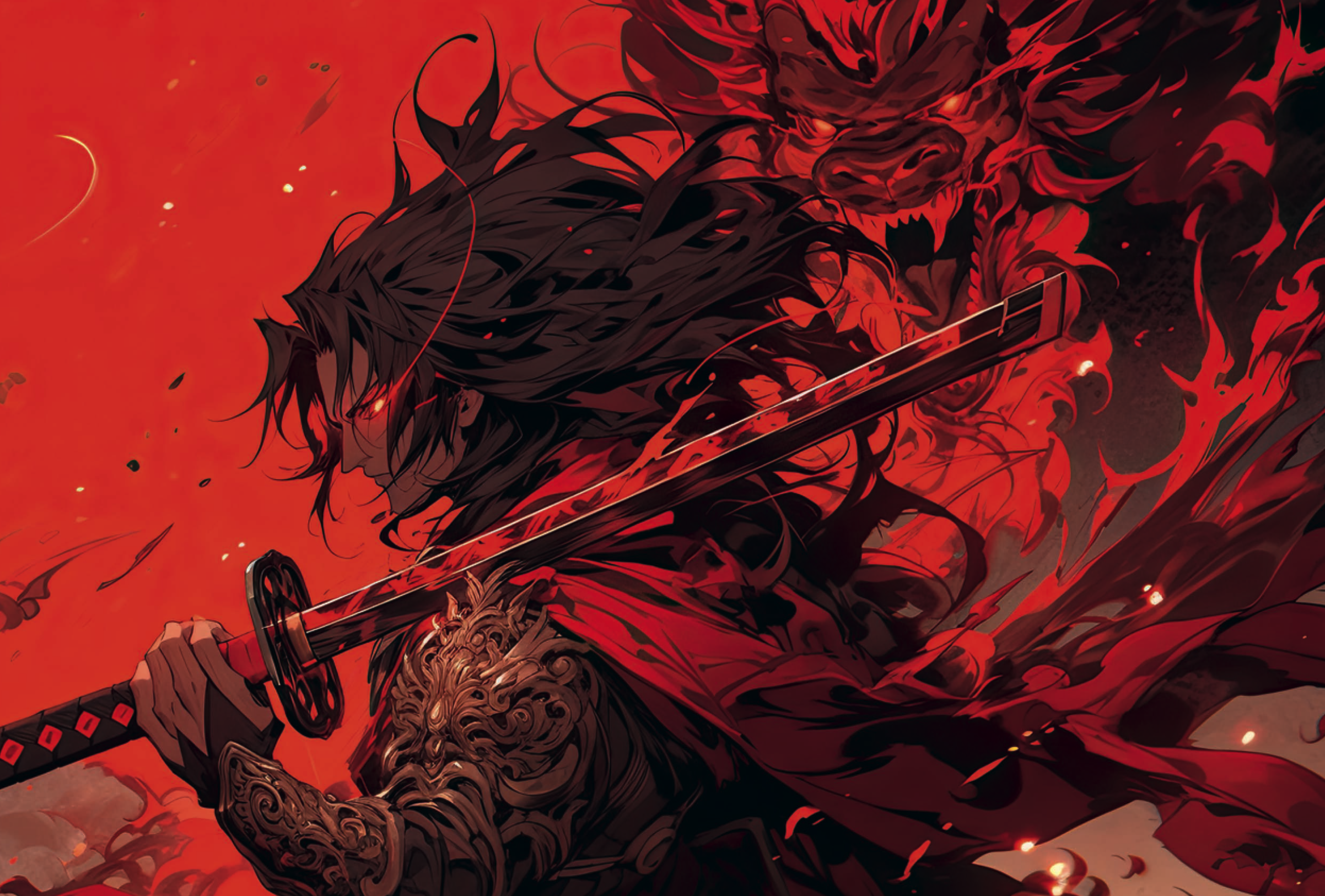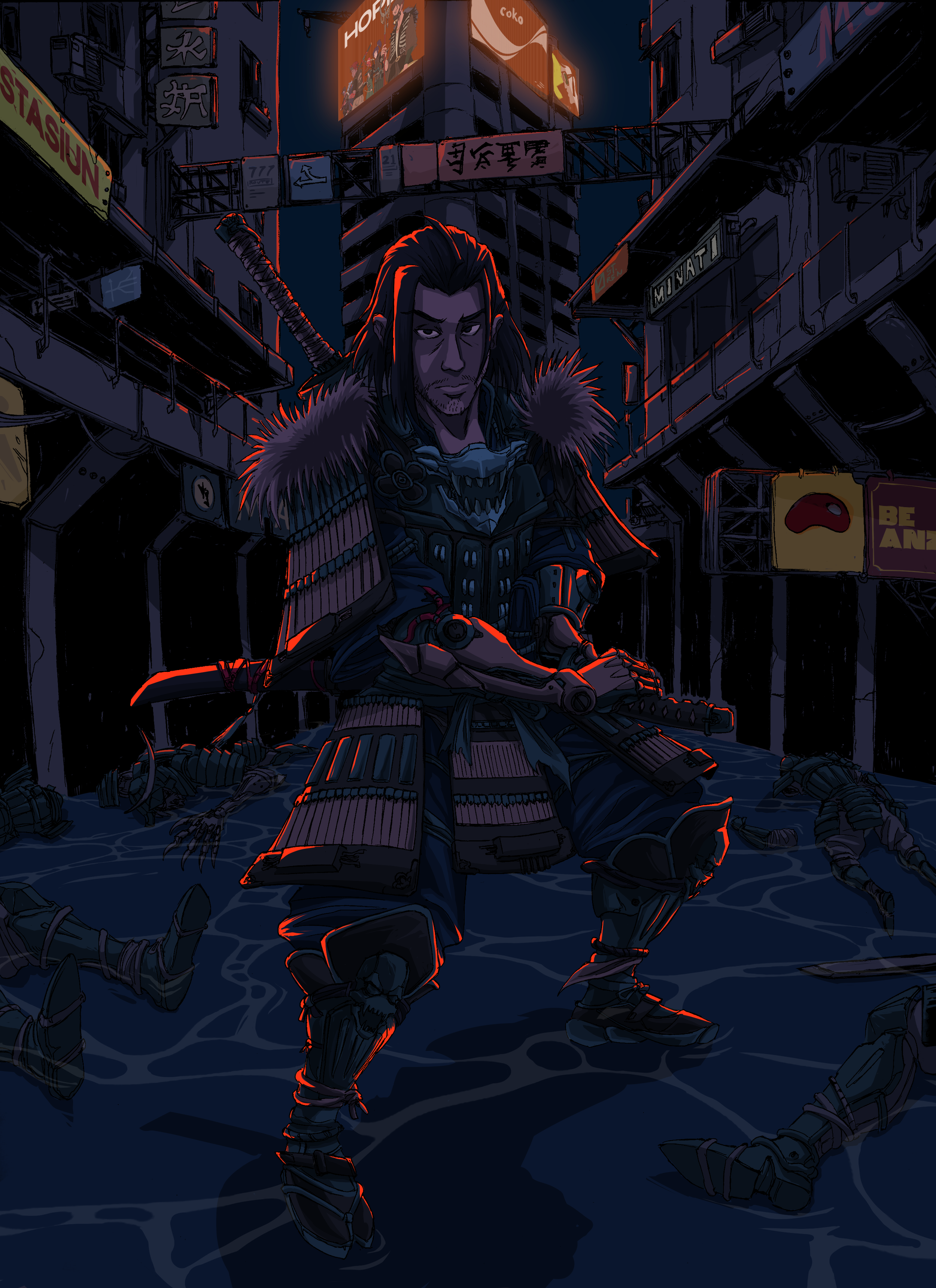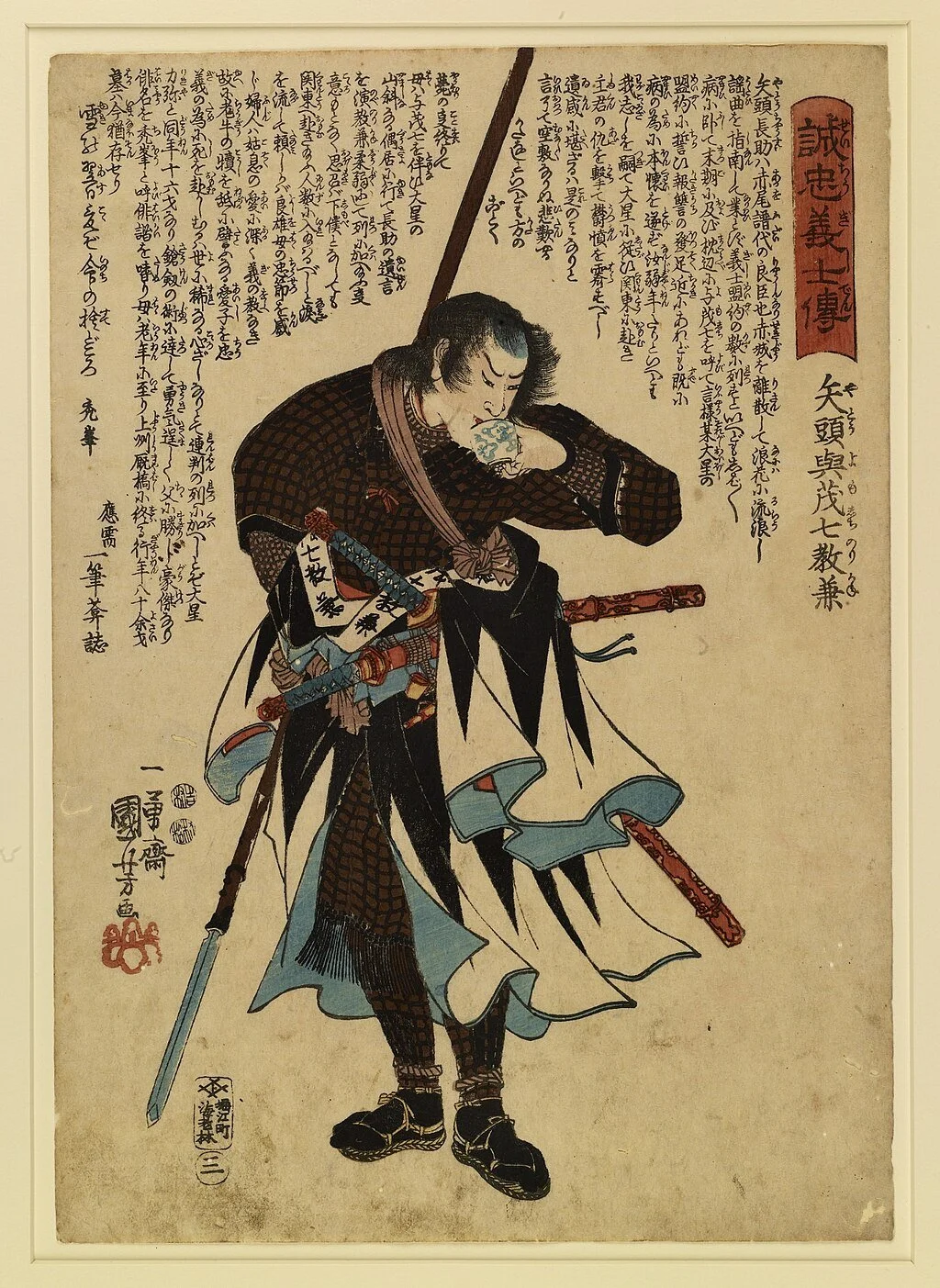From Wooden Swords to Talking Rabbits: Remixing the Samurai
The samurai has gone international. These days, he has left the snowy summit of Mount Fuji, the sacred waters of the Takachiho Gorge. He even steps beyond the neon flicker of Tokyo.
Original artwork created by Comolo, commissioned by LOST ART
This may sound odd, given how deeply rooted this archetype is in Japanese culture. Originating as feudal Japan’s aristocratic warrior caste, a samurai’s traditional image—skilled warriors wielding katanas, embodying elaborate codes of honour but capable of terrible violence—is practically a stereotype. Yet the true origins and legacies of samurai are far more complex, and showcase how different artists have remixed this figure in fascinating ways.
The samurai is rooted in history, or rather, at the point where history and folklore blur. One of Japan’s most mythologised swordsmen was Miyamoto Musashi, a 17th-century warrior who fought and won 62 duels in his lifetime, finding time in between to master painting, calligraphy, philosophy, and writing.
The samurai is rooted in history, or rather, at the point where history and folklore blur.
Image credit: public domain via Wikimedia Commons
But just as European knights were rarely gallant heroes in shining armour, the image of the well-cultivated and philosophical samurai is a heavily romanticised and arguably an ahistorical one. Tales of Miyamoto’s brilliance are heavily influenced by Eiji Yoshikawa, whose serialised novel Musashi was published throughout the 1930s, giving us the iconic image of Miyamoto Musashi as a ruthless, philosophical warrior.
Even Miyamoto was no stranger to the grittier side of martial life, as in the anecdote of how he (supposedly) won a duel against the master swordsman Sasaki Kojiro. The story goes that Miyamoto showed up late to the island where the duel would occur, having whittled a wooden oar into an improvised sword that was longer than his opponent’s.
Having driven Sasaki into a rage by his insults and disrespectful lateness, Miyamoto took advantage of his rival’s distraction and clubbed him over the head with the wooden ‘sword’. One version of this tale even claims that Miyamoto arrived late so he’d finish the duel just as the tide was ebbing, allowing him to quickly escape by boat before Sasaki’s infuriated disciples could cut him to pieces.
Having driven Sasaki into a rage by his disrespectful lateness, Miyamoto took advantage of his rival’s distraction and clubbed him over the head with the wooden ‘sword’.
Image credit: public domain via Wikimedia Commons
Whereas the samurai mythos was co-opted for propaganda purposes during the Second World War, post-war depictions of samurai were heavily influenced by the director Akira Kurosawa. Himself descended from a samurai family, Kurosawa grew up hearing both flattering and unflattering stories about the deeds of warriors, with his films shining a much more sceptical light on these traditions.
In Kurosawa’s movies Yojimbo and Sanjuro, he has actor Toshiro Mifune play a disreputable ronin (a masterless samurai wandering the countryside) whose skill in swordsmanship is only equalled by his aptitude for dirty tricks. In Seven Samurai, Mifune’s character Kikuchiyo is a drunken peasant ostracised by his aristocratic counterparts, but also one of the film’s unquestioned heroes. Even in Throne of Blood, Mifune’s aristocratic protagonist is a far cry from conventionally good-hearted heroes—his character is a version of Shakespeare’s Macbeth.
Kurosawa’s use of Shakespearean lore wasn’t the only foreign influence in his vision of samurai. Yojimbo loosely adapts Dashiell Hammett’s crime novel Red Harvest, translating a plot set in 1920s Montana into 1860s Japan. Likewise, film critic Catherine Russell points out that Yojimbo and Sanjuro feature jazz-inspired soundtracks, using anachronistic music to parallel Mifune’s disruptive character.
Perhaps it’s Kurosawa’s willingness to think internationally that helped his work become so influential. Italian director Sergio Leone brought Kurosawa’s American inspirations full circle by adapting Yojimbo into A Fistful of Dollars. Seven Samurai was in turn reimagined as The Magnificent Seven, while sci-fi B-movie Battle Beyond the Stars translates its plot into outer space (with the helpless villagers of Kurosawa’s original transformed into a planet whose inhabitants are called the ‘Akira’).
Image credit: public domain via Wikimedia Commons
But you can’t talk about how samurai cinema influenced the West without talking about Star Wars. George Lucas’ A New Hope borrows from Kurosawa’s The Hidden Fortress, Darth Vader’s helmet resembles the kabuto helms that samurai wore, and the Jedi’s portrayal as enlightened swordsmen is heavily indebted to Lucas’ understanding of samurai culture—the word ‘Jedi’ itself may have been inspired by jidaigeki, the Japanese term for period films, where you’re most likely to spot a samurai.
You can’t talk about how samurai cinema influenced the West without talking about Star Wars.
Samurai-inspired media didn’t only take Western films by storm in the 1970s. Manga of this era gave us iconic depictions of samurai, such as in the work of Kazuo Koike, who combined mature depictions of sex and violence with in-depth historical research.
His manga Lone Wolf and Cub follows the bloody revenge quest of an executioner and his infant son who are the sole survivors of a massacre of their family. Koike’s mix of historical detail and dramatic storyline about a father-son relationship build on Kurosawa’s unsentimental depiction of feudal Japan, but with healthy doses of bloodshed that allow his work to be read equally as historical dramas and as sensationalistic pulp entertainment.
To understand Lone Wolf and Cub’s greatness, you only have to look at the artists it inspired. Want to read a graphic novel? There’s Max Allan Collins’ Road to Perdition, which recasts this manga’s plot amongst the Great Depression’s gang wars. Prefer to play a video game? The Last of Us is a post-apocalyptic twist on this premise. Or would you like to watch a show instead? Then check out Star Wars’ The Mandalorian, which takes the franchise back to its roots of samurai-inspired storytelling.
Image credit: public domain via Wikimedia Commons
These cross-pollinating influences has given us some truly surprising twists on samurai stories. Stan Sakai’s 1980s comic Usagi Yojimbo (take a guess which Kurosawa film its title references) even takes the unusual route of loosely adapting Miyamoto Musashi’s life story in a world of talking animals, with a rabbit as its protagonist.
Samurai will continue to roam through pop culture, as ready to take on endless forms as it can take on endless enemies.
From ancient legends to modern anime and manga, the samurai is a vessel for exploring evergreen themes—nationalism, honour, revenge, paternal love. Even their appearance can go through endless mutations: traditional topknots swapped for cowboy hats, kimonos for a Jedi’s robes. Samurai will continue to roam through pop culture, as ready to take on endless forms as it can take on endless enemies.
They’ll probably always have swords, though. The swords are cool.







